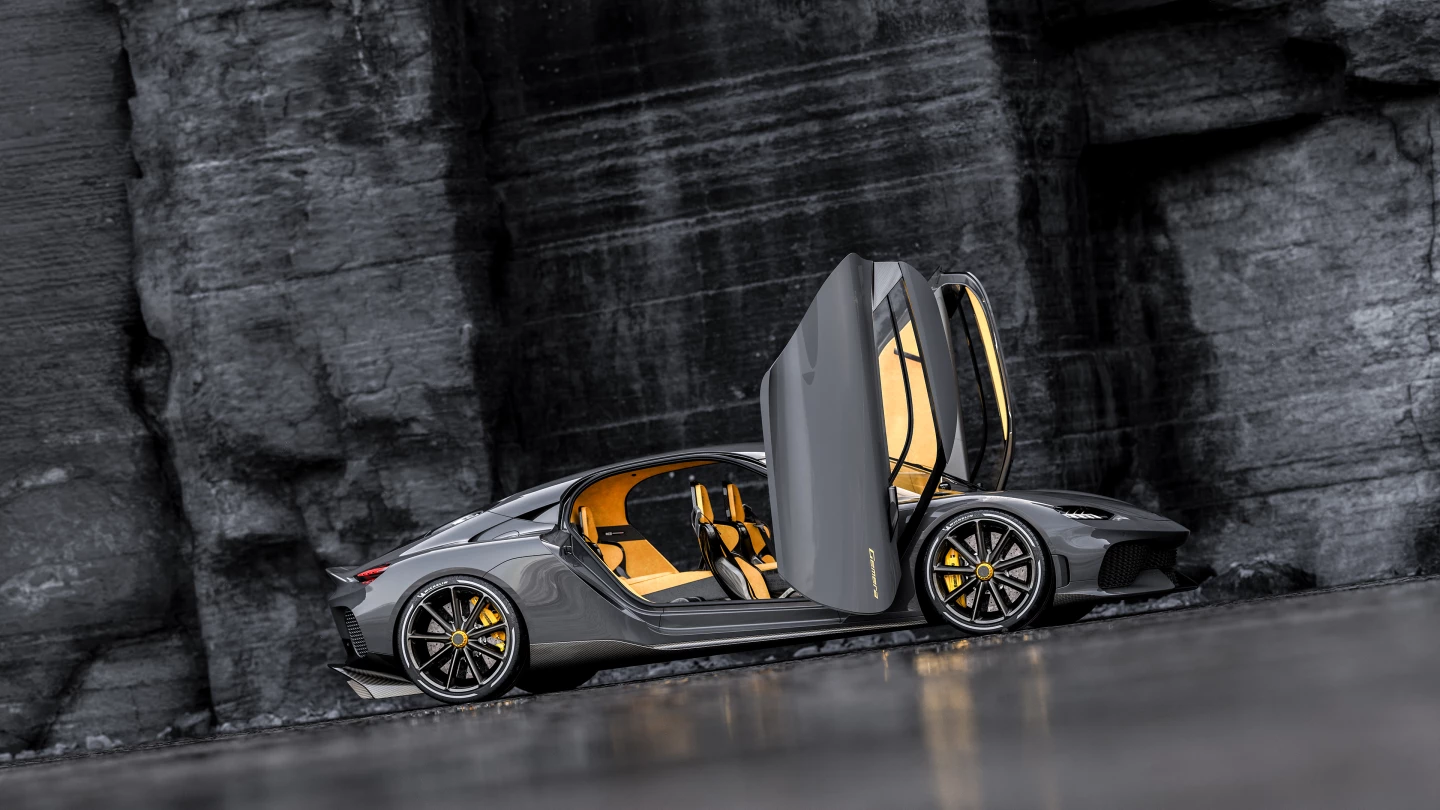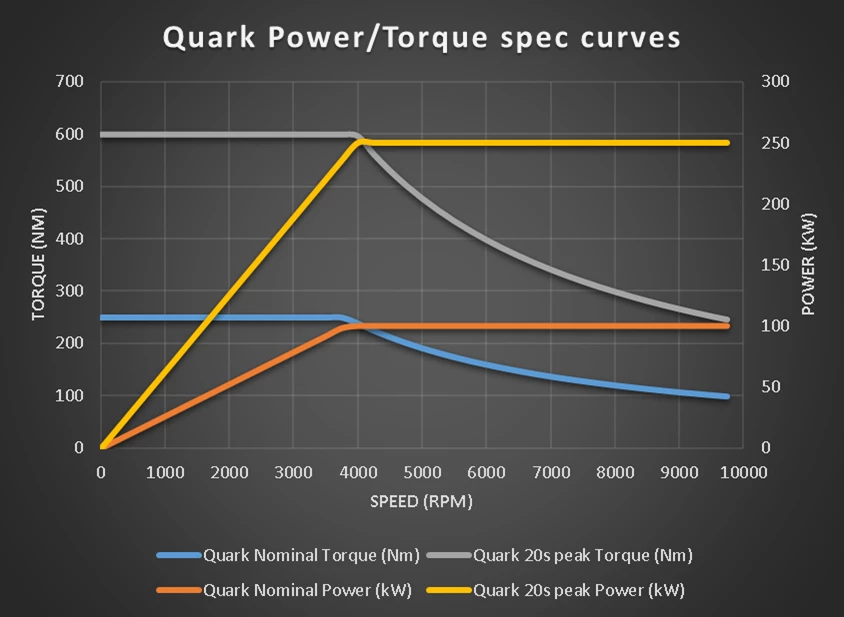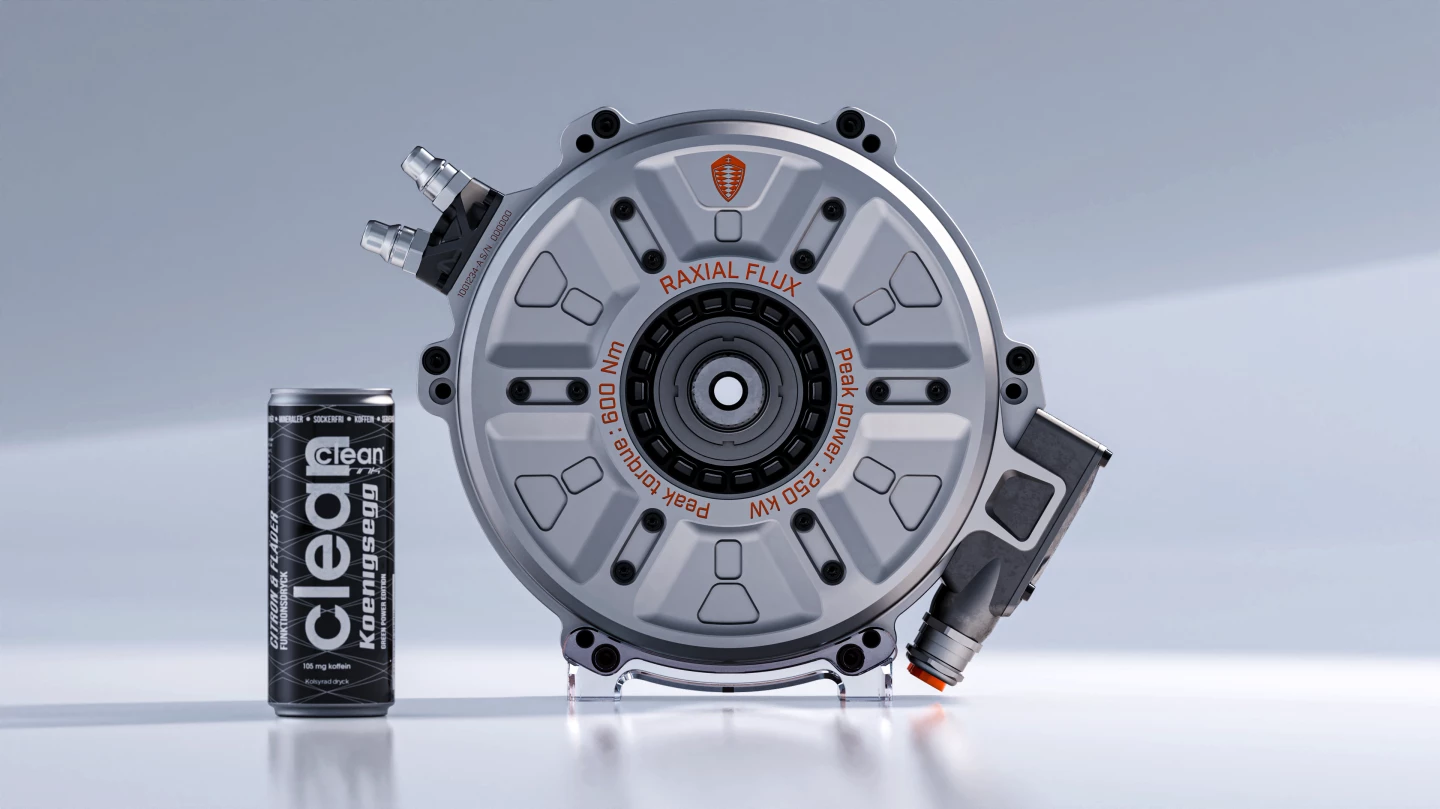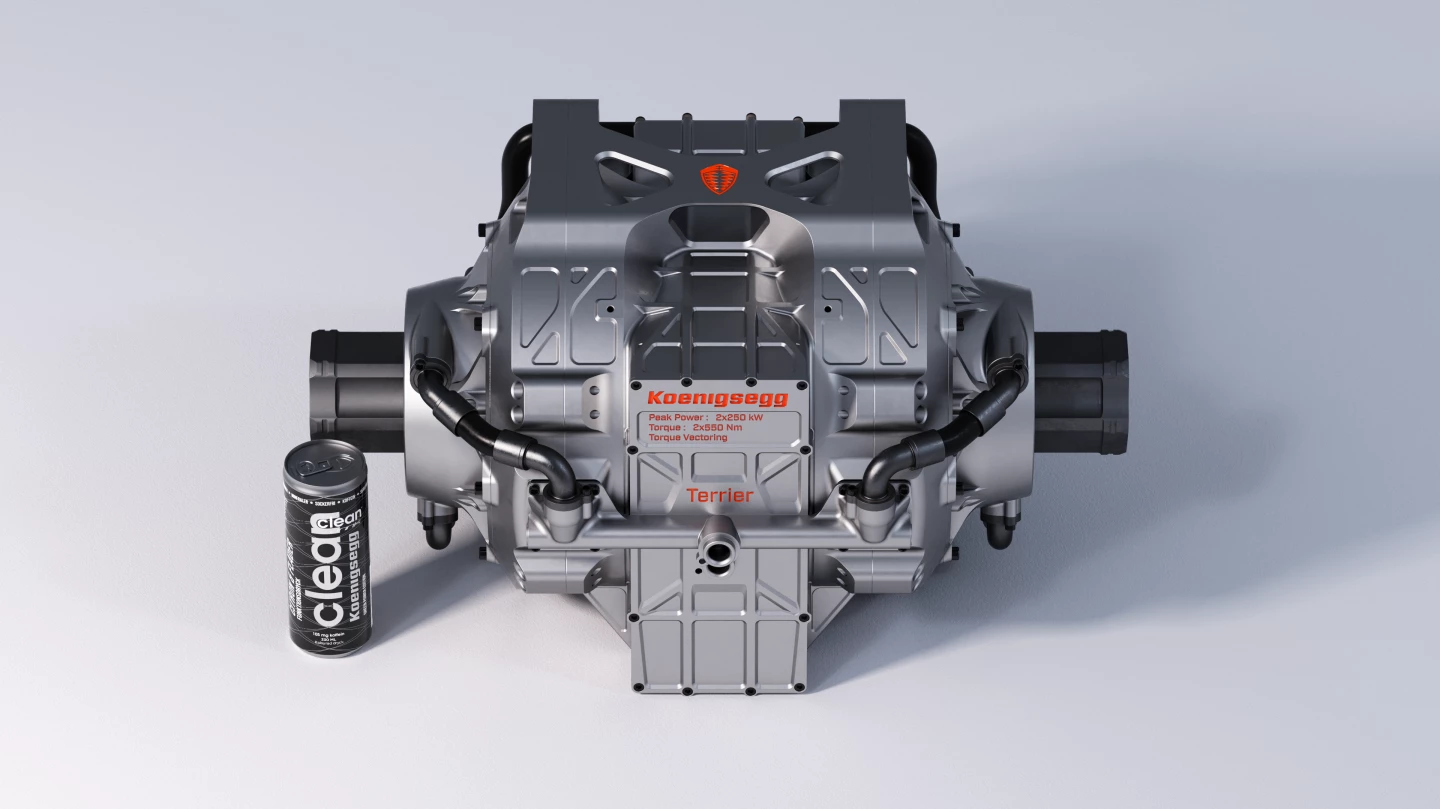Not one to let the inadequacies of existing technology stand in its way, Koenigsegg has been an innovating pioneer in modern powertrain technology, rethinking fundamentals with solutions like gearbox-free direct-drive hybrids and camshaft-free engines. Its latest breakthrough has come in the form of a compact electric motor that squeezes together the torque-heavy benefits of axial flux topology with the power-dense boost of a radial flux layout. The all-new Quark motor will help the boundary-smashing Gemera four-seat GT achieve sprint times formerly reserved for the world's quickest electric coupes while supporting a wide range of applications from aerospace to marine.
Developing the world's first "mega-GT," a four-seat grand tourer with power and performance figures to rival the world's most expensive, overpowered hyper-coupes, is no easy task. Koenigsegg continues to approach it by shrinking down its powertrain, work that started with shoehorning 590 hp into a 2.0-liter three-cylinder fossil free-fuel engine it calls the "Tiny Friendly Giant." It's always planned to configure that engine within a gearbox-free Koenigsegg Direct Drive (KDD) layout, using three complementary electric motors. This week, it's provided a closer look at what the small, potent e-machines will look like.

Koenigsegg applied principles from existing radial flux and axial flux motors to develop what it calls Raxial Flux topology. It doesn't explain what exactly that combination looks like in practice, but it does promise the best torque-to-power-to-weight ratio in the industry. The Quark motor's 8.5 kW/kg power-weight ratio doesn't exceed previously set benchmarks, but the 66-lb (30-kg) motor really shines in its 443 lb-ft (600 Nm) of peak torque.

"The Quark is designed to bolster the low-speed range of the Gemera, where you need it, for brutal acceleration," explained Dragos-Mihai Postariu, electric motor design lead. "The ICE then focuses on the high-speed range. What this means in terms of performance for the Gemera is a big power surge followed by a continuous record-speed push to 400 km/h (249 mph) without any torque or power losses."
Bottom line: The Gemera will launch from 0 to 62 (100 km/h) in 1.9 seconds, as quickly as virtually any all-electric supercar on Earth, then continue supernatural levels of acceleration up through 249 mph ... all while packing the ability to shuttle the whole family (of four) to the airport.

Contributing to the low weight of the Quark (pictured next to an 11.2-oz/330-ml can of energy drink for perspective) is not only its compact 12 x 13 x 4.4-in (303 x 334 x 112-mm) size but also the no-expense-spared materials that go into its construction. Those include an aerospace-grade 300M steel shaft and a rotor that uses the Aircore hollow carbon fiber technology Koenigsegg introduced on its wheels. Direct cooling contributes to the efficient, compact design, as well.
"The Quark is unique in its high efficiency in combination with its class-leading torque-to-power-to-rpm-to-weight matrix," said company CEO, founder and namesake Christian von Koenigsegg. "This means, when using the Quark in applications such as marine, aircraft or VTOL, there is no need for a step-down transmission; instead direct drive can be achieved, as the RPM of the motor is right from the get-go."
Koenigsegg further capitalized on the Quark's small, torque/power-dense packaging to create a small, powerful dual-motor electric drive it calls the Terrier. Two Quarks sandwich the company's David six-phase inverter to create the 670-hp/811 lb-ft torque-vectoring electric drive, which weighs as little as 187 lb (85 kg). The single inverter dedicates three phases to each motor, eliminating the need for a second inverter.

The power and torque characteristics of the Quark motors allow for use of compact, low-ratio planetary gear sets in the Terrier, contributing to the small, lightweight design. In turn, Koenigsegg says that the Terrier drive can be directly bolted to the vehicle chassis, eliminating the need for subframe components.
Koenigsegg imagines the Terrier finding use in many EV applications.
The company plans to release more details about its electric powertrain components in the coming weeks. It said last September that it plans to prepare the Gemera, and the all-new production facility where it will be built, for a 2023 production start. It will build a total of 300 units.
Source: Koenigsegg









